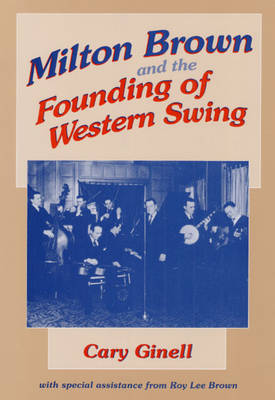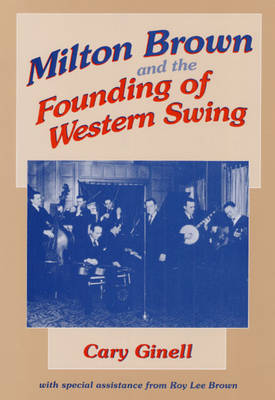
- Afhalen na 1 uur in een winkel met voorraad
- Gratis thuislevering in België vanaf € 30
- Ruim aanbod met 7 miljoen producten
- Afhalen na 1 uur in een winkel met voorraad
- Gratis thuislevering in België vanaf € 30
- Ruim aanbod met 7 miljoen producten
Zoeken
Omschrijving
A few weeks before his death in an auto accident, Milton Brown and his band the Musical Brownies recorded forty-nine songs in a single three-day session. That prolific output was a testament to Brown's enormous popularity not only on record but as head of the premier touring act in the Southwest. Cary Ginell draws on interviews and his own musical knowledge to chart Brown's too-short career. Ginell sees Brown as the first key figure to merge blues, jazz, and country into the genre that artists like Bob Wills and Spade Cooley later popularized as Western Swing. Following Brown from his early years to his rise via the Fort Worth dance hall scene, Ginell traces the evolution of the singer-bandleader's musical innovations like adding vocals to dance music and his band's adoption of a style heavy with rhythm and blues. In 1936, Brown and his band stood at the brink of national stardom when Brown's car hit a telephone pole. He died five days later.
Specificaties
Betrokkenen
- Auteur(s):
- Uitgeverij:
Inhoud
- Aantal bladzijden:
- 374
- Taal:
- Engels
- Reeks:
Eigenschappen
- Productcode (EAN):
- 9780252020414
- Verschijningsdatum:
- 1/09/1994
- Uitvoering:
- Hardcover
- Formaat:
- Genaaid
- Afmetingen:
- 161 mm x 236 mm
- Gewicht:
- 712 g

Alleen bij Standaard Boekhandel
+ 99 punten op je klantenkaart van Standaard Boekhandel
Beoordelingen
We publiceren alleen reviews die voldoen aan de voorwaarden voor reviews. Bekijk onze voorwaarden voor reviews.








